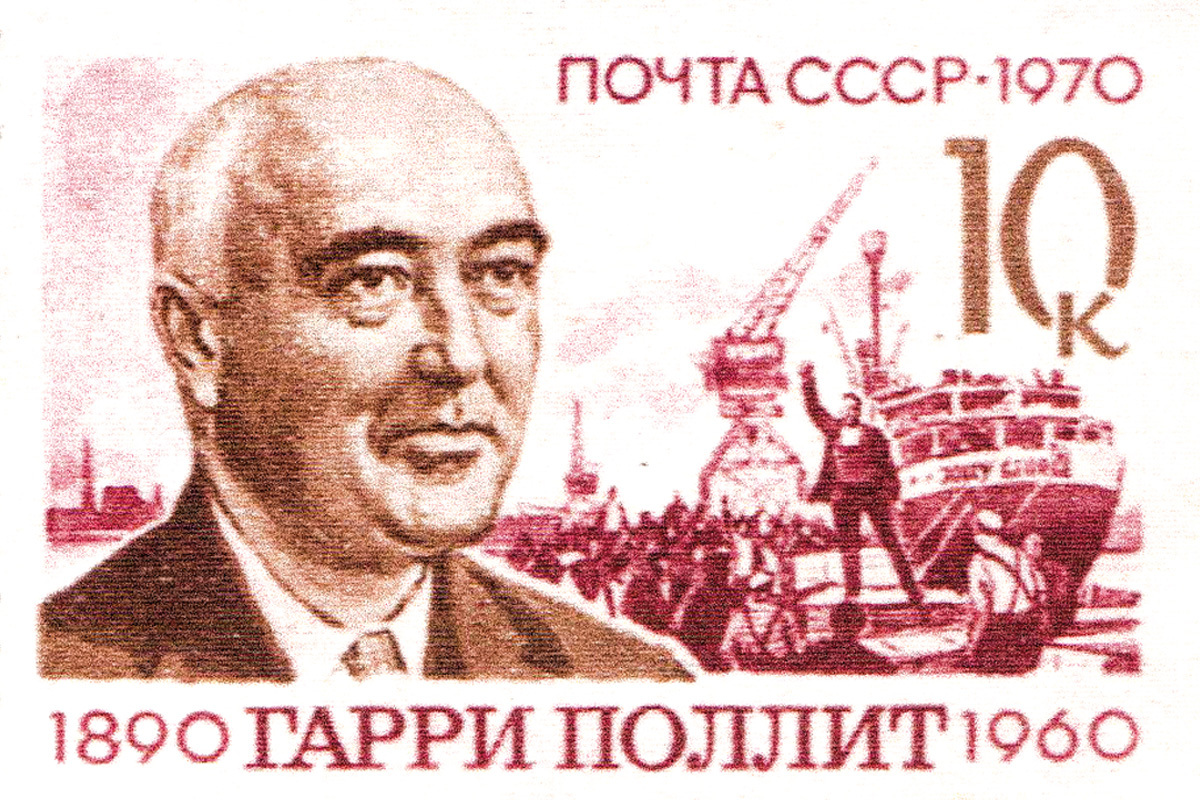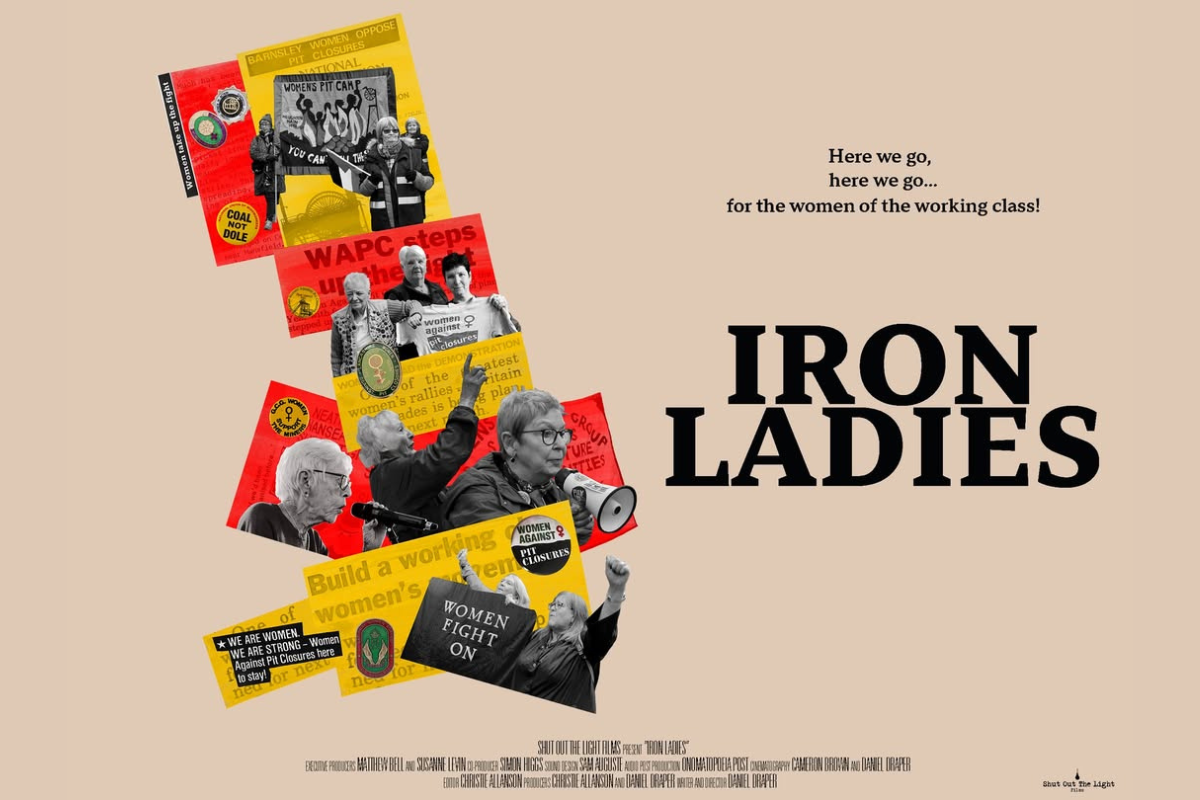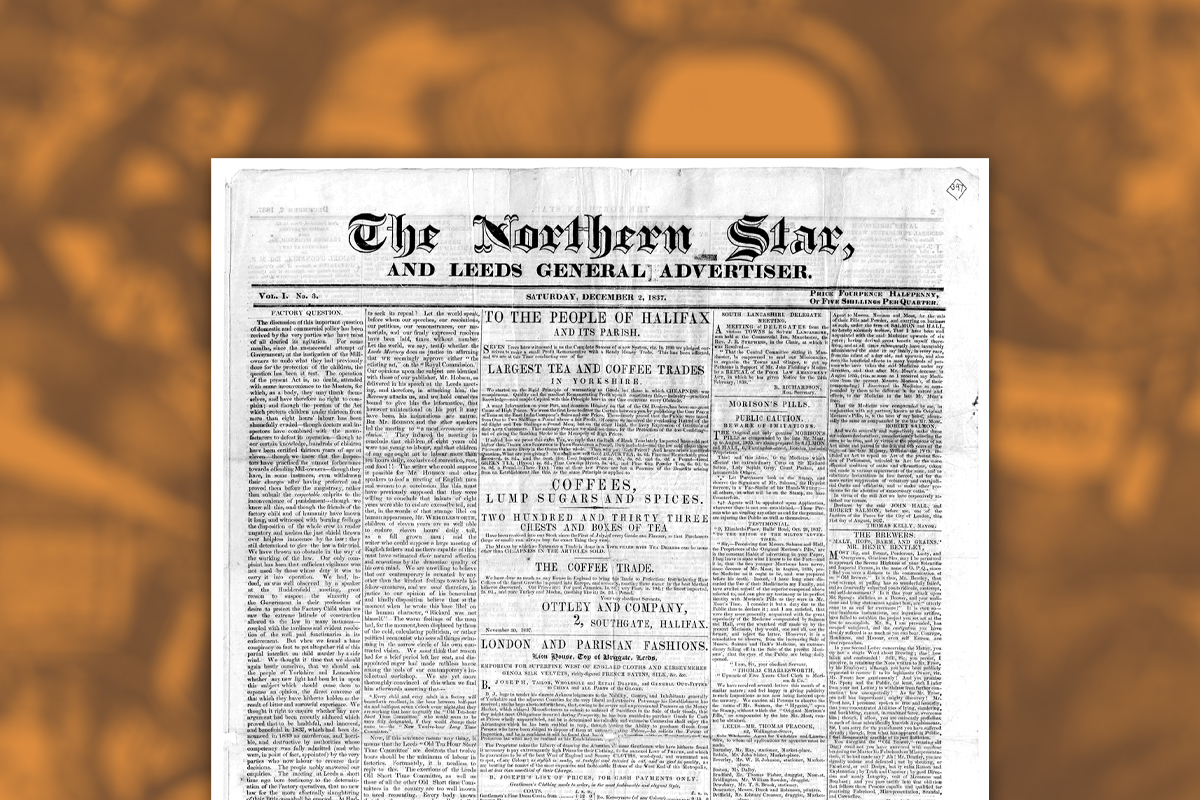We are excited to announce the publication of a new book by Rob Sewell, editor of Socialist Appeal, on Chartism: a titanic struggle by British workers in the 1800s that involved arming, general strikes and insurrection, a fact buried by official ‘histories’.
To mark the release of this amazing book, we publish below an extract from the preface, in which Rob explains why we must learn about Chartism and reclaim the revolutionary history of the British labour movement.
Until the end of October, Chartist Revolution is available for pre-order at Wellred books for a special discounted price!
Rob Sewell will be launching his new book at the opening session of this year’s Revolution Festival, next Friday, 23 October. Get your ticket today – and join the revolution!
Extract from the preface of ‘Chartist Revolution’
By Rob Sewell
 Chartism was a revolutionary movement of millions of workers, the first of its kind in British history. It represented a display of working-class consciousness and power that pushed Britain to the very brink of revolution. The British working class showed through Chartism that it was capable of revolutionary struggle and forms a crucial part of the experience of the working class. On this basis alone, the history of the Chartist movement deserves detailed study.
Chartism was a revolutionary movement of millions of workers, the first of its kind in British history. It represented a display of working-class consciousness and power that pushed Britain to the very brink of revolution. The British working class showed through Chartism that it was capable of revolutionary struggle and forms a crucial part of the experience of the working class. On this basis alone, the history of the Chartist movement deserves detailed study.
>Engels remarked that the Chartist period displayed “the most advanced class struggle the world has seen”. In the decade from 1838 to 1848, the mass movement that swept the country threatened to topple the British establishment, its wealth, its power and its extensive empire. It would be no exaggeration to say that, during the last two hundred years, the working class has never come so close to taking power as then.
This is certainly how contemporaries saw it. “A spark would ignite the combustible material and bring upon us all the horrors of servile [civil] war”, complained Lieutenant Colonel Pringle Taylor. “In living in it all, I always feel as if I were toasting muffins at a volcano”, observed Lord Francis Egerton, a Lancashire landowner.
Britain at the time was in the grip of revolutionary upheavals, events which certainly resonate with us today. In the nineteenth century, Chartism was considered as dangerous as Bolshevism was in the twentieth century. The propertied classes reacted to this threat in their usual manner, with brutal class laws, treachery, imprisonment, chains, gibbets, solitary confinement, transportation to penal colonies, as well as the grim spectre of public hangings. Ruthlessness was not a characteristic in which they were lacking.
The English judicial system still maintained on the statute books the medieval practice of perpetrators being hanged, drawn and quartered. The majority of executions were for offences against property. In February 1803, the executioner held up the head of his victim before a London crowd:
“Behold the head of a traitor!” Edward Marcus Despard and six of his comrades had been found guilty of treason and died with fortitude. Despard, a member of the London Corresponding Society and the United Irishmen, declared he was innocent, but died because he was “a friend to the poor and the oppressed.” (E.P. Thompson, Making of the English working class)
In 1820, the Cato Street conspirators were also executed in full public view. After half an hour of being throttled by hanging, their bodies were lowered one at a time and decapitated with a carving knife. They were, I suppose, fortunate. Seven years earlier and their sentences could have included their heart and bowels being torn from their bodies while still alive. It was a savage and cruel reminder of what to expect for those – ‘the lawless and furious rabble’ – who dared challenge the power of the propertied classes. These defenders of private property and executors of state terror were the “bloodhounds” that the poet Shelley talked of, which famously chewed on human hearts.
As the spectre of revolution cast its long shadow, the Chartist movement waged a courageous battle for democratic rights that was inextricably bound up with the fight for working-class emancipation. If a revolution can be defined as the direct interference of the masses in the destiny of a country, then Britain was certainly in the throes of such turmoil.
Through their audacity, the common people – those who had no rights – sought to turn the world upside down so that those at the bottom would replace those at the top. Or, more accurately, they wanted to do away altogether with both top and bottom. They certainly did not lack courage, determination or self-sacrifice. They were prepared to “storm heaven”, to quote the words of Marx in describing the Communards in Paris. Unfortunately, the Chartist leaders, who undoubtedly possessed a proletarian outlook, were nevertheless still feeling their way and were unsure as to what steps were needed to succeed. […]
Why study chartism?
Of course, [the question is posed]: why study a workers’ movement in Britain in the 1830s and 1840s, almost 200 years ago? I, for one, after studying the subject, firmly believe that Chartism does have a special relevance for today. There are, of course, significant and obvious differences between the Chartist period and the present time. But I would argue there are also definite similarities or parallels. […]
The obscene wealth gap between rich and poor has never been greater than today. The ‘Law of Increasing Misery,’ as it became known, is clear for all to see. The Poor Law and the workhouses, the cruellest of imaginings, have been replaced with Universal Credit and the whip of benefit sanctions, where payments are withheld from the most vulnerable. […]
Many things have changed, we are told, and yet so much remains the same, including the vile, revolting hypocrisy of the political representatives of the ruling class. Today, British workers have already experienced the biggest fall in real wages for any decade since that of the Peterloo massacre of 1819. What we now face is a return to the 1930s, or probably worse. Austerity will be intensified. That will bring horror without end for millions. In other words, Britain is entering an unprecedented economic, social and political crisis. These are not the birth pains capitalism experienced in the first half of the nineteenth century, but the symptoms of its terminal decay. It has been a long time in the making, but now that it has finally arrived, it will be a thousand times worse.
[…] As in Chartist times, the British ruling class are once again haunted by the prospect of revolutionary upheavals, at home and abroad. They are right to be alarmed. The working class is now a thousand times stronger and comprises the overwhelming majority of the population.
This deep crisis poses the same fundamental questions that confronted the Chartist movement so long ago: how can the working class attain real political power? How can we put an end to this system of exploitation?
In this epoch of capitalist crisis, the idea of patching up the system or creating a ‘nicer’ capitalism is a dead end and the most utopian of dreams. The idea that tomorrow will be better than today and the day after tomorrow better still, which found its expression in reformism, has died a death. The capitalist crisis is producing terrible convulsions that threaten to push society towards barbarism. A horrendous period of austerity and attacks now confronts the working class, as faced by the working class in the first half of the nineteenth century. Everything has come full circle. Only a root and branch solution is now possible and that means the overthrow of capitalism and its replacement with a socialist planned economy. […]
History in the making
 The glorious history of Chartism is therefore far from being an academic study, as is the case with so many history books. It is a history, a tradition, a case study for the here and now. “History”, explained the celebrated historian, E.H. Carr, is “an unending dialogue between the present and the past”. It is certainly not, in the words of historian Arnold Toynbee, “just one damn fact after another”, bereft of meaning and incapable of interpretation.
The glorious history of Chartism is therefore far from being an academic study, as is the case with so many history books. It is a history, a tradition, a case study for the here and now. “History”, explained the celebrated historian, E.H. Carr, is “an unending dialogue between the present and the past”. It is certainly not, in the words of historian Arnold Toynbee, “just one damn fact after another”, bereft of meaning and incapable of interpretation.
History would have zero value if it actually taught us nothing. The writer Mark Twain, in emphasising the similarities between different historical periods, is reputed to have said that “history doesn’t repeat itself, but it often rhymes.” The task before us is to draw out the generalisations from past experience, so as to illuminate the way forward. To be forewarned is to be forearmed.
The driving force of history, as Marx explained, is the class struggle. It is made by and through men and women, but under conditions not of their own making. To fully understand history, we need to understand the struggle of different classes, parties, groupings and their leaders, and what actually motivated them. In this fashion we can truly dissect the anatomy of a movement; in our case, Chartism. […]
Marx and Engels, who spent most of their adult lives in London and Manchester, learned a tremendous amount from their experiences in Britain, which helped to enrich their understanding. The Chartist movement in particular had a significant impact on their political outlook. After all, Marxism is a theory of movement enriched by the class struggle. It may be defined as the generalised historical experience of the working class.
Engels certainly developed and deepened his ideas when he came to live in England in late 1842, where he gathered material for his new book, much of which came from the Chatham Library in Manchester. It was here, in England, that he acquired a deep insight into the class struggle and the questions it raised.
Engels was only twenty-two years of age when in 1843 he visited the offices of the Chartist newspaper The Northern Star in Leeds and for the first time met Julian Harney, its acting editor. This first meeting developed into a lifelong friendship. Engels joined the Chartist movement, “openly aligned” himself, to use his expression, convinced that Britain was heading for a social revolution.
Based on his studies he wrote his Sketch for a Critique of Political Economy, an independent attack on the political economists of the day. He, along with thousands of others, was a frequent visitor to the Manchester Hall of Sciences, where Chartists and others spoke.
I have often heard working men, whose fustian jackets scarcely hold together, speak upon geology, astronomical, and other subjects, with more knowledge than most ‘cultivated’ bourgeois in Germany possess. (Engels, Condition of the working class in England)
He became a regular contributor to The Northern Star and attended Chartist gatherings and meetings. As a result of this work, leading Chartists, especially Julian Harney and Ernest Jones, established close relations with Marx and Engels. “We kept in touch with the revolutionary section of the English Chartists through Julian Harney, the editor of the central organ of the movement, The Northern Star, to which I was a contributor”, explained Engels in his essay ‘On the History of the Communist League’.
Both Marx and Engels lent their support to Chartism long before the appearance of the Communist Manifesto. They were keen to build up its revolutionary wing and imbue it with the ideas of scientific socialism. This was the approach they subsequently outlined in the Manifesto, explaining that they did not “set up any sectarian principles of their own, by which to shape and mould the […] movement.” They engaged with it as it existed and tried to influence it. Their advantage was that, theoretically, they had a clear understanding of the line of march, and the movement’s ultimate general results.
Revolutionary awakening
 The Chartist movement was the first independent movement of the British working class, a proletarian revolutionary party, which was striving to conquer political power. “The stormy era of Chartism”, explained Trotsky, witnessed “the revolutionary awakening of the British proletariat.” Chartism stands out as the first of its kind. Above all, it reflected the belief that the emancipation of the working class could only be achieved by the working class itself. Moreover, for the first time in Britain, it seriously raised the prospect of social revolution.
The Chartist movement was the first independent movement of the British working class, a proletarian revolutionary party, which was striving to conquer political power. “The stormy era of Chartism”, explained Trotsky, witnessed “the revolutionary awakening of the British proletariat.” Chartism stands out as the first of its kind. Above all, it reflected the belief that the emancipation of the working class could only be achieved by the working class itself. Moreover, for the first time in Britain, it seriously raised the prospect of social revolution.
However, given the way things turned out, the Chartist movement proved to be more of an anticipation of future developments. As Trotsky explained:
The significance of Chartism lies in the fact that the whole subsequent history of the class struggle was as if summarised in advance, during that decade. Afterwards the movement turned backwards in many respects. It broadened its base and amassed experience. (Trotsky, Writings on Britain)
He concluded: “On a new and higher basis it will inevitably return to many of the ideas and methods of Chartism.”
Chartism eventually died out, but, as Trotsky noted, it left behind a rich legacy. In the end, faced with the threat of revolution, at home and abroad, the British ruling class was forced to grant reforms and concessions, resulting in new laws to legalise the trade unions, the repeal of the Corn Laws, increased wages, successive extensions of the franchise in 1867 and later years, as well as the introduction of the ten-hour working day. This confirms the broad fact that reforms are a by-product of revolutionary struggle.
The decline of Chartism coincided with a new period of capitalist upswing, which was to push the working class away from independent politics and onto the path of skilled trade unionism and liberalism. By alternating the parliamentary struggle between Liberals and Conservatives, the ruling class found a vent for the opposition of the working class. Politically, the workers’ movement was to trail behind the Liberal Party for the next fifty years, until the formation of the Labour Party. Politically, the Liberal careerists eventually jumped ship and their political offspring now infest the Parliamentary Labour Party.
Goethe said long ago that old truths have to be won afresh again and again. This also applies to our revolutionary traditions. That is why a real history of Chartism, which highlights its genuine meaning, is exceptionally important for the new generation of workers and youth. Engels attached great importance to such a history. He remained in touch with Julian Harney right up until his death and was keen for him to write his memoirs. As Engels wrote in October 1885:
What the bourgeois have written on the subject is for the most part false; nor have I ever concerned myself with such literature. It’s unfortunate, for if Harney doesn’t write his memoirs, the history of the first great worker’s party will be lost forever.
In February 1893, Engels had again urged Julian Harney to write a history of Chartism, but unfortunately Harney felt too old and sick to attempt such a task. […]
Today the epoch of the rapid advance of capitalism, the so-called Golden Age, is long gone, and the system has instead come to a shuddering halt. British capitalism, together with world capitalism, is in the throes of the deepest of crises. It has exhausted itself and can no longer develop the productive forces. The system can no longer afford reforms, only devastating counter-reforms and blistering austerity. It is preparing new convulsions and dramatic changes in the consciousness of all classes. As Trotsky commented before the war, if you are looking for a comfortable and peaceful life, you have chosen the wrong time to be born.
In many ways, the working class today stands at a crossroads. Its destiny will be determined in the stormy years that lie ahead. Chartism, therefore, must not be viewed as some heirloom to be admired in a museum or from a great distance, but as an essential part of our working-class heritage. The Chartists showed colossal determination, courage and self-sacrifice, “mettle”, as Marx described it. Above all, they were standard-bearers for a new society, who engaged in a whole spectrum of revolutionary struggle. In this present crisis, the real lessons of this history are vital. We should learn from them, from their strengths as well as their weaknesses, in preparation for the titanic events that confront us.






